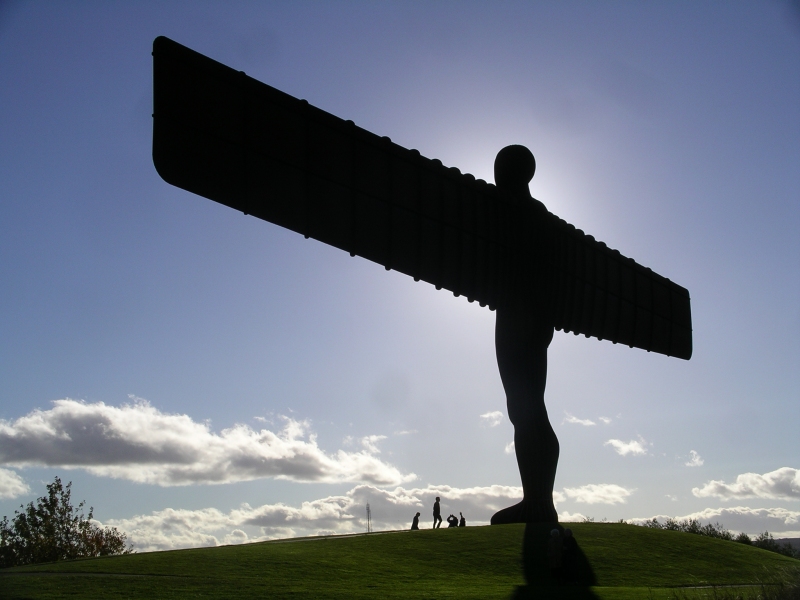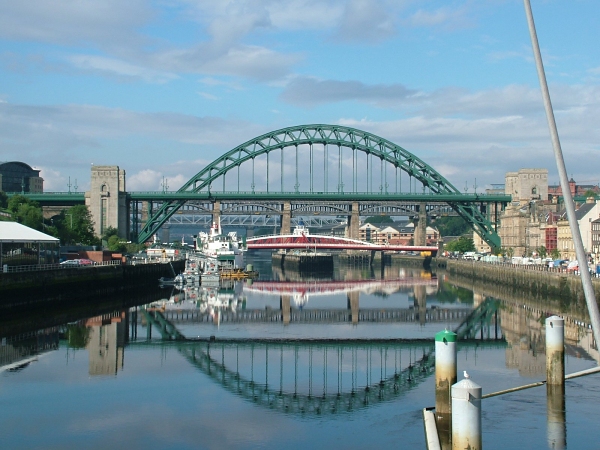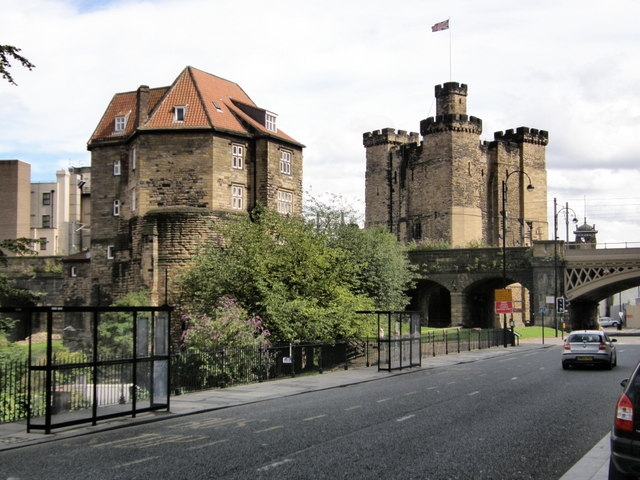
By now it's 3:00PM and the excellent breakfast I enjoyed in Catlowdy seems like nothing but a fond memory. Off we head eastward, passing the Roman ruins of Chesters and Housesteads, and always the wall is beside us.
We roll up and down a long and winding road full of camelback humps that leave me as thrilled as a child on a roller coaster. Pulling off for a moment at Heavenfield to view a plaque that commemorates a Saxon battle in 667, we then head to St. Oswald's Tea Room.
A cup of tea and a cheese savoury sandwich on brown bread in this quiet, lovely tea room is fortifying. A second cup of tea is even more strengthening, and it's a good thing because as much as we've seen today, there's still much more to come.
Into Newcastle Upon Tyne we travel for a petrol stop, but this necessary foray has given us the opportunity to cross the many-bridged Tyne, which we do twice in order to get a closer look at the imposing Castle Keep and the Cathedral of St. Nicholas, with its brass weather vanes glimmering in the bright sunlight.
Back on the A-1 we pass office buildings, residential areas, shopping centers and high-rise apartments. I feel almost at home here, as this is very similar to the lay of the land in the heavily populated area where I live. Sooner than I would be at home though, we are out of the city and passing by a huge monstrosity (pardon me) ... a magnificent sculpture high upon a hill.
The Angel of the North is Britain's largest sculpture. It boasts a wingspan of approximately 165 feet and towers approximately 60 feet over the edge of the Great North Forest near Gateshead. The sculpture was made from 200 tons of steel and was assembled on-site in February of 1998.
To each his own, but to me this looks like one of Those Magnificent Men In Their Flying Machine's ideas gone bad. I am more amused than impressed, but still crane my neck for another look as we drive away.

The River Tyne is a river in North East England and its length, excluding tributaries, is 73 miles. It is formed by the confluence of two rivers: the North Tyne and the South Tyne. These two rivers converge at Warden Rock near Hexham in Northumberland.
Read more about the River Tyne at Wikipedia.

Newcastle upon Tyne, commonly known as Newcastle, is a city in Tyne and Wear, North East England, 103 miles south of Edinburgh and 277 miles north of London on the northern bank of the River Tyne, 8.5 miles from the North Sea. Newcastle is the most populous city in the North East.
Newcastle was part of the county of Northumberland until 1400, when it became a county of itself, a status it retained until becoming part of Tyne and Wear in 1974. The regional nickname and dialect for people from Newcastle and the surrounding area is Geordie.
Read more about Newcastle upon Tyne at Wikipedia.